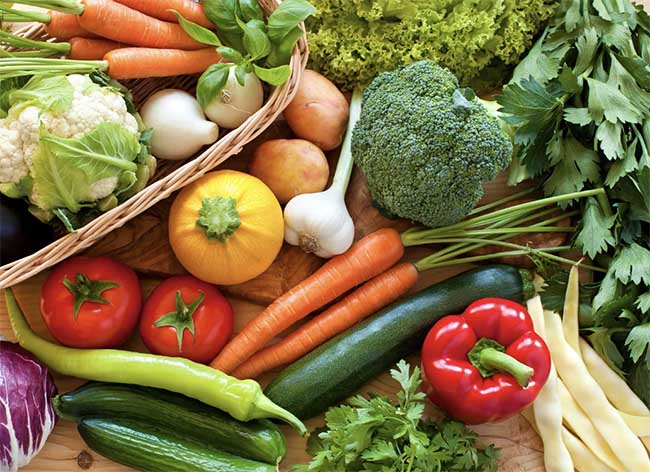The 7 Easiest Vegetables to Grow for Italian Cooking
If you love Italian food, and you are a fan of farm-to-table, you can grow your own vegetables that are most associated with Italian cuisine.
Here’s a quick look at some of the most popular vegetables to grow for Italian cooking.
Fresh Basil
There’s almost nothing simpler or more delicious than fresh basil. You can use it to flavor almost any Italian dish, and it’s also perfect for salads.
How to grow and harvest?
A few weeks after your last date of frost, straight sow basil since it is a warm-weather plant. 12 or so space plants. “Keep them spaced out and well-hydrated. Cut any flower stems short of encouraging leaf growth. Alternately, cultivate it the Ligurian way by scattering the seed sparingly and pulling the whole plant when it reaches a height of around 6 inches. You may nurture the delicate baby plants in this manner all summer long since our seed packs come with many seeds. In pots, basil grows well, so that you may use an 8 “. If you have a small garden, consider a pot or a larger one. A full sun should be received.
How to eat?
Basil has a distinct flavor that is both aromatic and somewhat peppery. Use to create sauces, pesto or to give ordinary cooking more flavor. We like it so much that we also use it in salads and on our favorite (and simplest!) summer lunch, the above sandwich with fresh mozzarella, fresh tomato, and fresh basil. As straightforward and lovely as it gets.
Beans
Beans are another easy veggie to start from seed and grow. They’re great added to Italian dishes like pasta or risotto and are also perfect for use in salads or on their own. They’re one of the most popular veggies eaten in Italy, so they’re the perfect addition to any Italian-inspired meal!
How to grow and harvest?
After the soil reaches 60 °F, direct sow, rows should be set 12–14 inches apart, with seeds planted 1” deep and every 2”. Keep seeds well-watered for 5–8 days or until they begin to sprout. Pick often to help more pods form.
How to eat?
Pick young beans. Since they taste better, a greater pod set is encouraged. Hold the bean’s base where it connects to the plant and pull it with your other hand. They must be simple to separate without harming the plant. The ideal preparation is to boil, shell, and garnish the vegetables with olive oil & fresh herbs.
Leaf Chicory
How to grow and harvest?
Plant seeds with a distance of approximately an inch between them in shallow furrows. Lightly cover and thoroughly water. In approximately a week, the seed will begin to sprout. When seedlings are approximately 2 inches tall, you may pull them for salads. Whole plants should be cut with a knife when they are around 6 inches tall.
How to eat?
With salads!
Head Lettuce
How to grow and harvest?
Space the plant seeds about an inch apart. Eat the trimmings after thinning to a distance of about 12 inches.
How to eat?
With salads and olive oil.
Misticanza
How to grow and harvest?
Seeds should be spaced approximately an inch apart and directly sown in shallow furrows. When it’s grown enough to create a great salad, harvest it.
How to eat?
With salads!
Beets
How to grow and harvest?
Plant seeds 1 inch apart, 1/2 inch deep. Stay well-hydrated. Use the thinning in the salad after thinning to 4 inches apart. Hill up the roots as they emerge from the ground to keep the tips from becoming corky. For the finest taste, harvest the roots when they are the size of a golf ball or slightly larger.
How to eat?
Beets are not usually the first thing that comes to mind when you think of Italian food, but they’re a great option for adding color and flavor to your dishes. Beets are delicious roasted, pickled, or sliced and added to salads.
Tomatoes
How to grow and harvest?
Growing tomatoes requires some amount of work, some guys from the backyard gardeners network did great jobs on some detailed guides about tomatoes, I would recommend you to check them out.
There are 2 common types of tomatoes, determinate and indeterminate tomatoes. Determinate tomatoes can grow well both in pots or in the ground, they usually only grow to a set of height and then begin to send their energy towards the development of all fruits at the same time.
Indeterminate tomatoes will continue their growth until the plants die, and the plants will continue to produce fruits and flowers for a period of time ( often three or four months). Determinate tomatoes require less pruning, trellising, and maintenance than indeterminate varieties.
For the best taste, you should harvest tomatoes when they are ripened on the vine.
How to eat?
You can eat raw fresh tomatoes or combine them with your recipes.
Conclusion
Italian food is a great choice for any meal and a great way to get more vegetables into your diet. But the best way to get the full Italian experience is to grow your ingredients. It’s easy to start with the 7 veggies listed above and is a great way to add color to your plate! From fresh basil to beets, these vegetables are perfect for Italian cooking and add tons of flavor to your meals. What’s more, they’re some of the easiest vegetables to grow, so there’s no better time to start!
